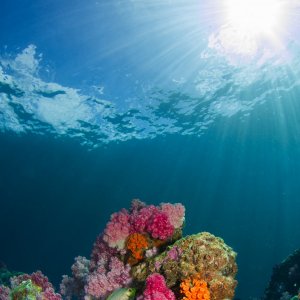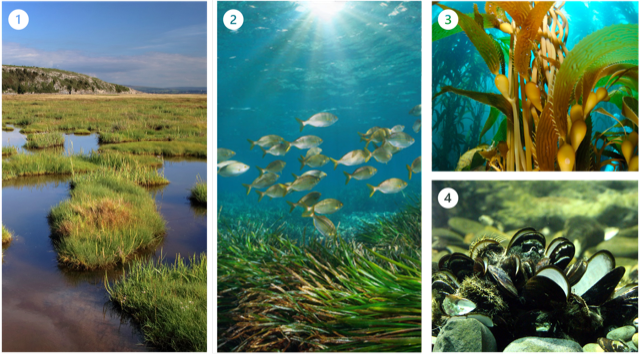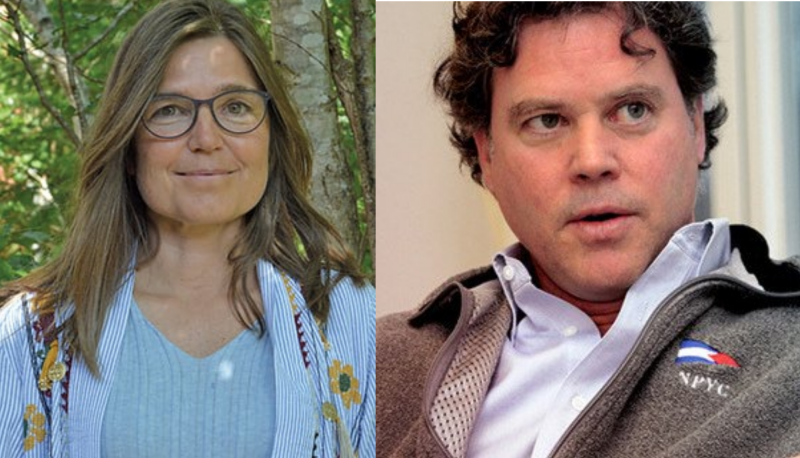
Key functions of habitat-forming species in coastal and marine ecosystems
The biodiversity and climate resilience of coastal marine habitats is often increased by habitat-forming plants and animals. Examples include colonial plants within salt marshes, mangroves (in the tropics), seagrass meadows and macroalgal forests, and animals such as shellfish and corals. These species create habitats that provide nursery areas, refuges and feeding grounds for a wide range of marine life. Many of these habitats also contribute to carbon storage (blue carbon), form natural coastal protection against storms and can clean waters by removing excess nutrients.
Restoration of these habitat-forming species of plants and animals, therefore, is an important Nature-based Solution (NbS) that benefits biodiversity, mitigates the effects of climate change, and promotes the delivery of a variety of other ecosystem services.

Fig. 1. Examples of key coastal marine habitat types where restoration of lost habitats can serve as Nature-based Solutions (NbS) supporting biodiversity, carbon storage (blue carbon), coastal protection, and water quality: Salt marsh (1), seagrass meadow (2), kelp forest (3), shellfish reef (4) (photos © creative commons).
Major ecosystem losses due to multiple stressors
Over the past Century, the impact of multiple stressors has markedly reduced the spatial coverage of these plants and animals leading to losses in ecological functions and societal services. Key stressors include land use change such as diking and draining of former wetlands, intensive agriculture, excess nutrient loading, and urbanization of coastal areas. Overfishing and bottom trawling also exert major, negative impacts on some of these coastal species and habitats and climate change has emerged as an additional, interacting stressor.
Challenges in trend reversal
Over the past decades, actions have been taken to reverse the decline in the health of these coastal habitats and ecosystems including reducing the level of stressors. In European waters, policies such as the EU Habitats Directive, the Water Framework Directive and the Marine Strategy Framework Directive have supported these actions. Importantly, even if stressors are removed, considerable time is needed for some species to recover. For example, even in high-quality environments, seagrass such as Posidonia oceanica in the Mediterranean Sea grows and spreads slowly. Within degraded environments, the growth of this seagrass can be further delayed or even hampered due to the loss of positive feedback mechanisms. Healthy seagrass meadows reduce water currents near the bottom which supports the resilience of existing meadows. On the other hand, bare seafloors have stronger water currents that may erode new seedlings and delay natural recovery.
Active restoration to facilitate recovery
Active restoration is often needed to facilitate and speed up the recovery process of habitats and the services they support.
Salt marsh restoration typically involves reestablishment of tidal flows by removal of dikes. Such restoration may go hand in hand with a new coastal protection strategy called “managed coastal realignment”, which integrates coastal and nature protection by abandoning engineered coastal protection measures. Seagrass restoration can involve creating new meadows based on seeds or plants sustainably harvested from nearby healthy meadows. Restoration of macroalgae such as kelp can require different actions including the re-introduction of rocks removed by fisheries or, where former kelp forests are now “barren grounds”, kelps can be reintroduced by using so-called “green gravel”, spores/sporelings attached to gravel and distributed among the rocks. To protect new kelps in barren grounds from being lost to grazing, sea urchins may need to be removed. Finally, the restoration of habitat-forming species such as shellfish and corals involves the re-introduction of individuals to promote natural reproduction, replenishment and growth of populations.
These restoration efforts are challenging and resource-demanding. This underscores the importance of management actions designed to avoid further losses and to promote natural recovery such as improving habitat conditions by reducing stressors. Furthermore, careful planning of active restoration is needed to enhance the rate of success.
Strategic planning of restoration
The planning of active restoration requires detailed knowledge to properly select target locations. In addition to offering suitable habitat conditions (water currents, bottom types, depths, etc.), sites should be those that historically supported the species to be restored, - inherent in the word “restoration”. Historical sources of information, such as societal knowledge, aerial photos and monitoring data are critical for planning successful restoration efforts.
A clear relationship exists between size of a restored area and its success rate in many species (e.g. seagrass). Large spatial scales help decrease negative feedback effects that maintain habitats in a degraded state and increase positive feedback effects that provide self-protection and resilience of restored habitats.
Large-scale ecosystem connectivity is also relevant for the prioritization of sites to be restored. Active restoration of sites that are key nodes of connectivity may support the natural restoration of connected sites. This aspect is often neglected because many restoration initiatives are local and not part of a large-scale national or regional restoration program, and information on connectivity may be unavailable.
Finally, it is important to allow enough time and effort for restoration to succeed. The introduction of specimens (e.g. seeds, spores, mature individuals) or other actions (e.g. removal of stressors such as urchins) may need to be repeated several times for species to thrive and to rebuild habitats. A monitoring program is critical to gauge the success and the need for follow-up actions.
Climate-readiness
While restoration of coastal ecosystems may contribute to climate change mitigation, climate change is also among the potential ecosystem stressors. Potential effects of climate change on the ecosystems in question are, therefore, important to consider in identifying the range of suitable habitat conditions and selecting suitable restoration sites. Future scenarios representing various societal strategies to mitigate climate change and other stressors can be helpful instruments in this regard.
FutureMARES
The EU research project FutureMARES (https://www.futuremares.eu/) explores how to best apply marine restoration, in combination with conservation strategies and sustainable harvesting, as a marine NbS to safeguard the biodiversity and climate resilience of our oceans. FutureMARES explores marine restoration through 9 “storylines” in European Seas including salt marsh (1) seagrass (4), macroalgae (3), and shellfish (1) habitats. The goal of FutureMARES is to provide science-based advice on the best use of NbS to protect biodiversity and ecosystem services in a future climate.
Authors: Dorte Krause-Jensen (below left), PhD, Prof, Senior scientist, Department of Ecoscience at Aarhus University and Myron A. Peck (below right), PhD, Prof, Biological Oceanographer, Head of the Department of Coastal Systems at NIOZ


